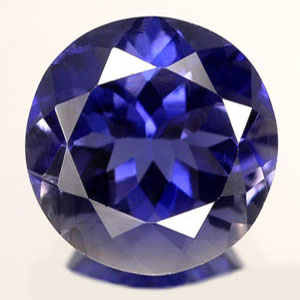Iolite ( Neeli )
Starting at Rs. ₹50.00 Per Rati
One of the lesser known gemstones with a discovery date going over hundreds of years the transparent gem form of cordierite, Iolite primarily constitutes magnesium iron aluminum cyclosilicate mineral.
The many colour form of Iolite can range from sapphire blue to violet-like blue and from light-blue to yellowish-gray.
Description
|
Iolite stone is a transparent gem-quality form of cordierite, a magnesium iron aluminum cyclosilicate mineral. Although the mineral has a history that dates back hundreds of years, the actual gemstone ‘iolite’ is considered to be relatively new and lesser-known. Cordierite was officially named after the French geologist, Pierre Louis Antoine Cordier (1777-1861) in 1813. The first significant and exciting discovery of large transparent, gem-quality deposits of iolite was made in 1996 in Palmer Creek, Wyoming (USA) by the American geologist, W. Dan Hausal. The world’s largest iolite crystal was discovered south of Palmer Creek, in Grizzly Creek, Wyoming. This record-breaking crystal weighs over 24,000 carats. The name ‘iolite’ originates from the Greek word ‘ios’ meaning ‘violet’. Iolite stone strong pleochroism earned it the misleading trade name of ‘water-sapphire’, a name now obsolete. From one direction, iolite can appear sapphire-like blue and from another, it can appear as clear as water. Furthermore, from the top view down, it can appear light golden or honey-yellow in color. ‘Dichroite’ is another synonym for iolite in reference to its pleochroic ability; ‘dichroite’ is a Greek word which loosely translates as ‘two-colored rock’. Iolite is also known as ‘the Viking stone’ because according to Norse legend, Vikings used iolite as a polarizing filter to help them find the sun on cloudy days. It is believed that the Vikings discovered iolite deposits throughout Norway and Greenland. Gem-quality iolite can vary in color from sapphire blue to violet-like blue and from light-blue to yellowish-gray. Its strong pleochroic properties can often be used to help identify and distinguish iolite amongst other similar colored gemstones. Iolite can sometimes be mistaken for sapphire and tanzanite, but it is softer than sapphire, and harder than tanzanite. Other gems which may also cause confusion include spinel and garnet, but both spinel and garnet are singly refractive, which means they lack iolite’s trichroism. Iolite stone deposits can be found in numerous locations around the world. Most of the iolite gemstones available today come from India, but some other significant sources include Australia (Northern Territory), Brazil, Canada (Yellowknife), Madagascar, Myanmar (Burma), Namibia, Sri Lanka (Ceylon), Tanzania and the United States, including Wyoming and Connecticut. Iolite stone is typically light to dark blue and violet, although it can also occur in various shades of yellow, gray, green or brown. The most desirable color is an intense violet blue that can rival that of tanzanite. Iolite is trichroic which means that three different colors can be seen in the same stone depending on the viewing angle. Some lower grade or poorly cut iolite can appear overly dark or ‘inky’, often appearing near-blackish. The mineral cordierite is typically opaque, while fine gem-quality iolite appears transparent to translucent in clarity. In many cases, the cutting quality of the gem can affect its clarity. Stones cut too deep may appear opaque. Most iolite exhibits some visible inclusions, especially in larger stones. Although they are rarely encountered, eye-clean specimens are not unheard of. When polished, iolite exhibits an oily to vitreous luster. Iolite is frequently given a step-cut to enhance color and it is one of the few gem types that are often intentionally ‘windowed’ or shallow cut to lighten its tone. Cutters must properly orient the rough carefully, taking into account iolite’s trichroism of blue, gray and near colorless forms. The most common shapes for finished stones include traditional faceted rounds, ovals and pear shapes. Fancy shapes and calibrated sizes are relatively accessible.
|
|
|


Reviews
There are no reviews yet.